In pictures: Life and death on the Mary Rose
- Published
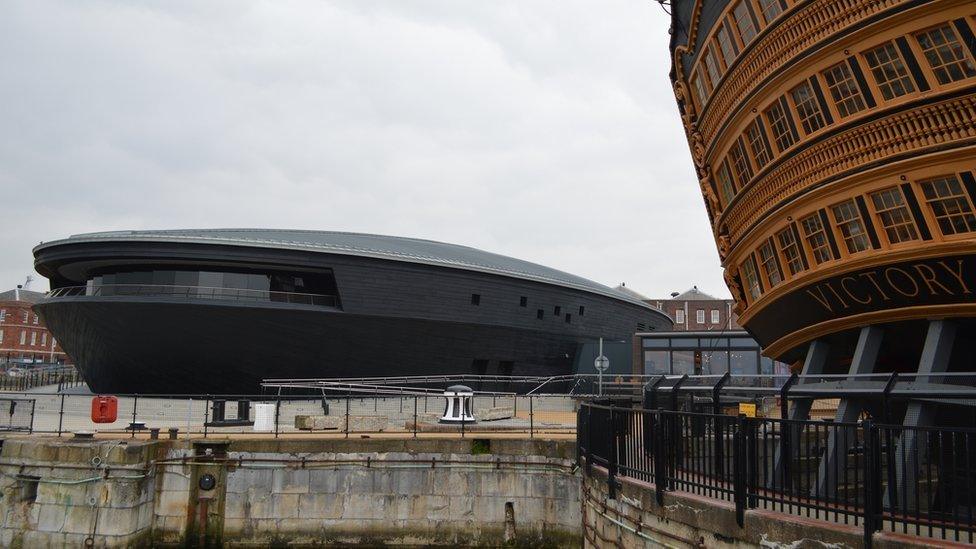
The new Mary Rose museum at Portsmouth Historic Dockyard has been built only yards from the site where Henry VIII's flagship was built on the mudflats next to the naval yard in 1509. It is next door to the navy's oldest serving ship, Nelson's flagship HMS Victory, which is only half the age.

The galley was discovered almost intact, with the chopping board still bearing knife cutting marks and the only known Tudor firewood to survive to this day. Every piece, including the bricks, is an original artefact found with the wreck.

Graffiti reading "Ny Coup Cook" was found carved onto a bowl, and "Ny Cop" onto the lid of a tankard, leading archaeologists to believe that was the name of the cook onboard. His skeleton was found nearby and tests showed he was in his 30s, with heavy strong bones but spent much of his working life bent over.
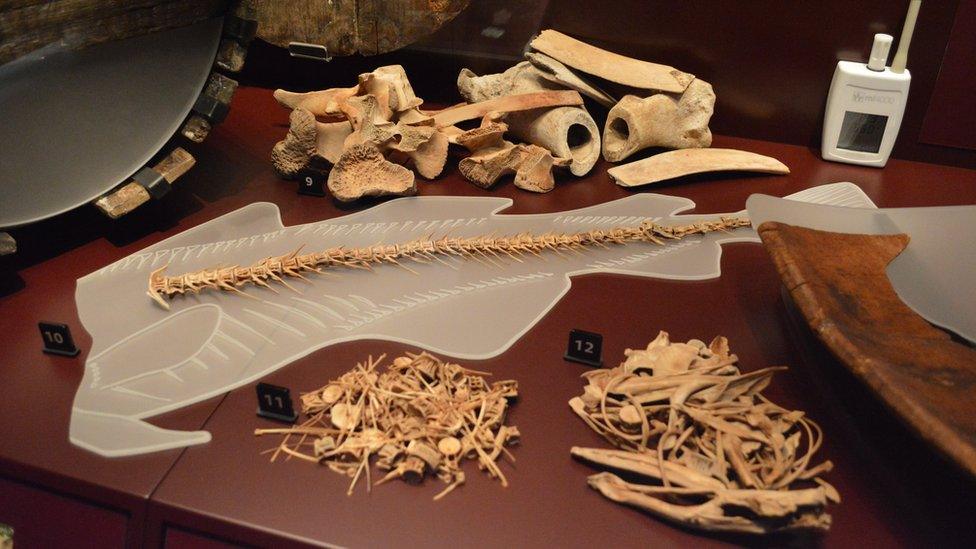
Bones from food that had not yet been eaten were found including the entire backbone of a cod (10), cattle (9), hake (11) and conger eel (12). Meals were served on square plates giving origin to the expression "a square meal a day", which is still used today.
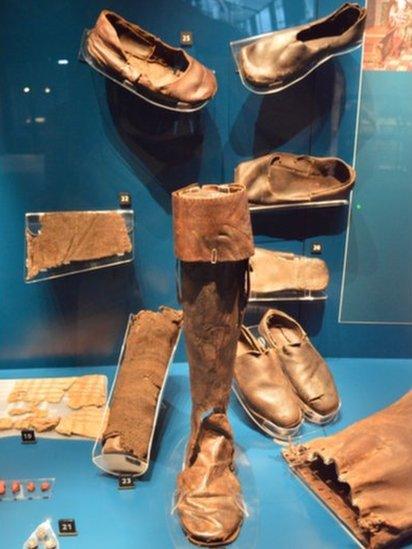
Shoes, a sock and a boot were among the footwear from 415 individuals found. About 500 men died when the ship sank. There was no list of crew names, just a list of numbers, and only the names of the vice admiral, Sir George Carew and the master, Roger Grenville are known.
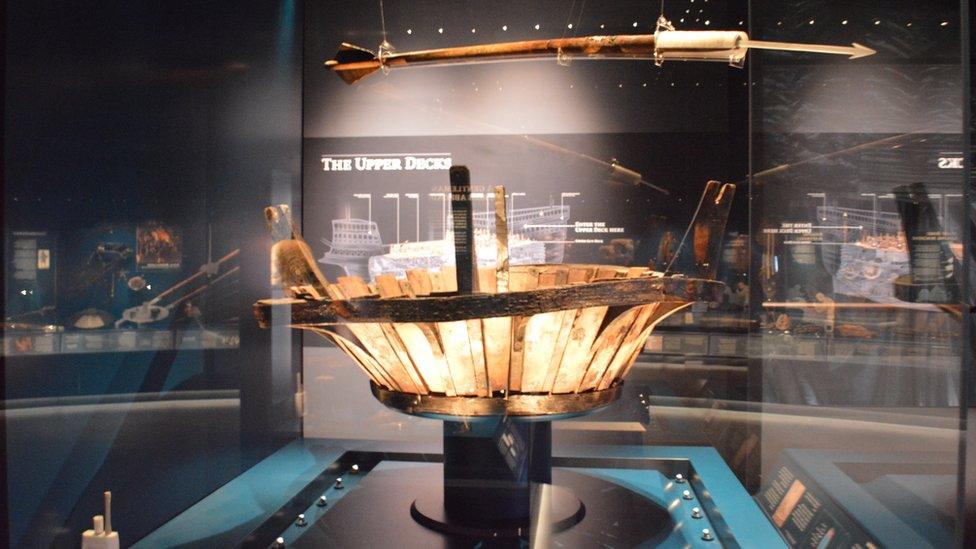
The Mary Rose's crow's nest was among the parts of the ship recovered from the seabed when it was raised from the bottom of the Solent in 1982. The ship sank after a gust of wind caught her and plunged her open gunports below the water, according to one of the 35 men who survived the sinking in 1545.
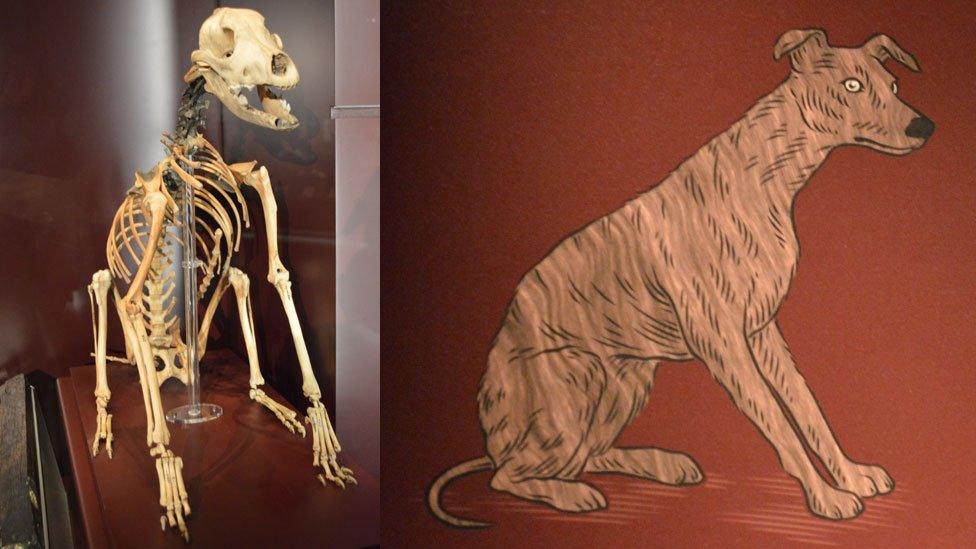
The skeleton of a healthy, young, male dog was found just by the entrance to the master carpenter's cabin. Named Hatch by museum staff, he was between 18 months and two years old, probably used for catching rats and looked like a cross between a terrier and a whippet.
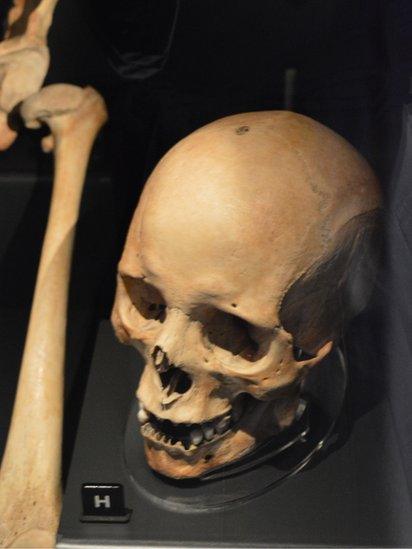
This man had survived being shot in the head with an arrow, but died when the Mary Rose sank. The healed wound can clearly be seen on the top of his head. Forensic scientists, more used to working with murder victims, have recreated the faces of nine of the crew which are used to tell their story in the museum.
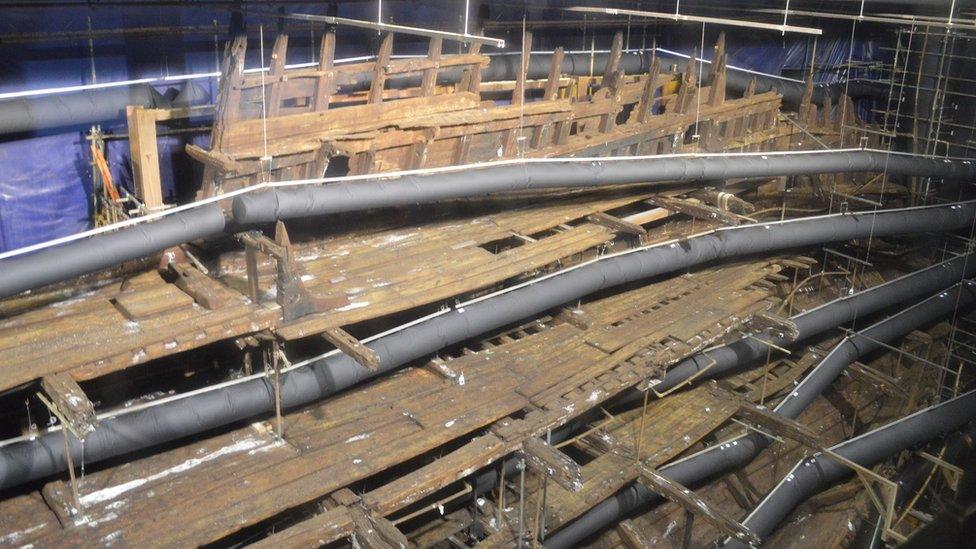
After the ship was raised from the Solent in 1982, it was sprayed with water until 1994, then Polyethylene Glycol (PEG), a type of wax, until earlier this year. For the next four years air tubes will be used to dry it out. After that, the screening walls and windows will come down and it will on full display inside the museum.

The Mary Rose represents a transition in naval history as it carried both new bronze cannons (foreground) along with wrought iron ones firing stone shots (ringed) and weapons, such as longbows and fire arrows, common in medieval warfare.

The skeleton of an archer was one of 92 complete ones found. He was in his early 20s and at 1.78m (5ft 10in), taller than many of the crew. The middle of his spine is twisted, a feature often seen in archers of the time, and his right finger has grooves on it which could have been made by repeatedly pulling a longbow string.
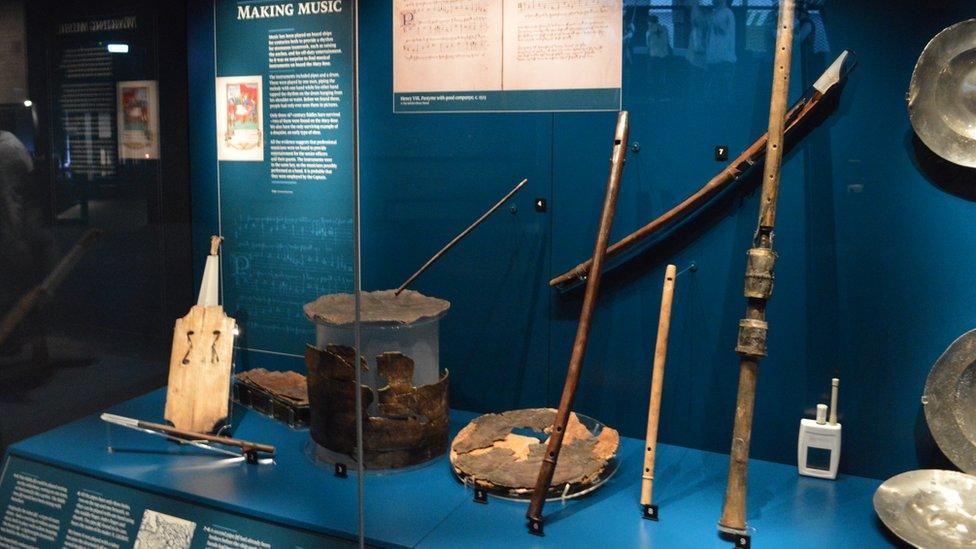
There were at least 10 musical instruments onboard, which were probably used by paid musicians for entertainment and for duties performed by the crew. Two fiddles, a tabor drum, a still shawn and three tabor pipes were found. Surviving Tudor instruments are rare and some of these are unique, filling gaps in history.
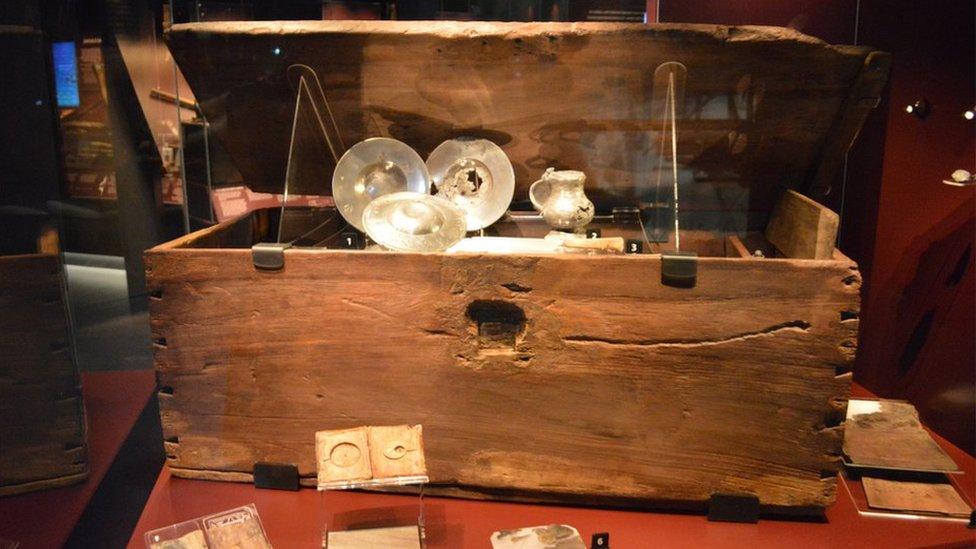
Many of the wealthier crew members brought their own chest and pewter plates and crockery. This chest contains a "hidden compartment" but when it was opened up, all it had in it was a pin - perhaps at the time Mary Rose sank the pin was attached to some valuable papers which have not survived.

When archaeologists opened this pepper mill they were met with a whiff of the spice and found peppercorns still inside. Being able to put pepper on your food in Tudor times was a sign of wealth as it was an expensive luxury.
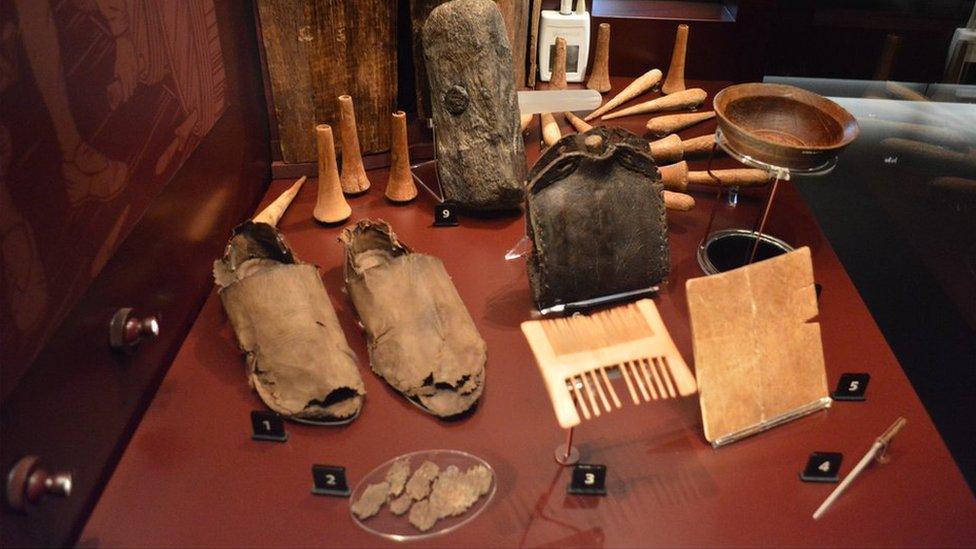
Of the 19,000 artefacts brought up from the wreck site since the discovery in 1971, many thousands were personal items such as these belonging to the purser. He was the man who controlled food and drink onboard. Each crew member's ration included one gallon (4.5 litres) of beer a day.
- Published30 May 2013
- Published30 April 2013
- Published2 April 2013
- Published13 February 2013
- Published30 January 2013